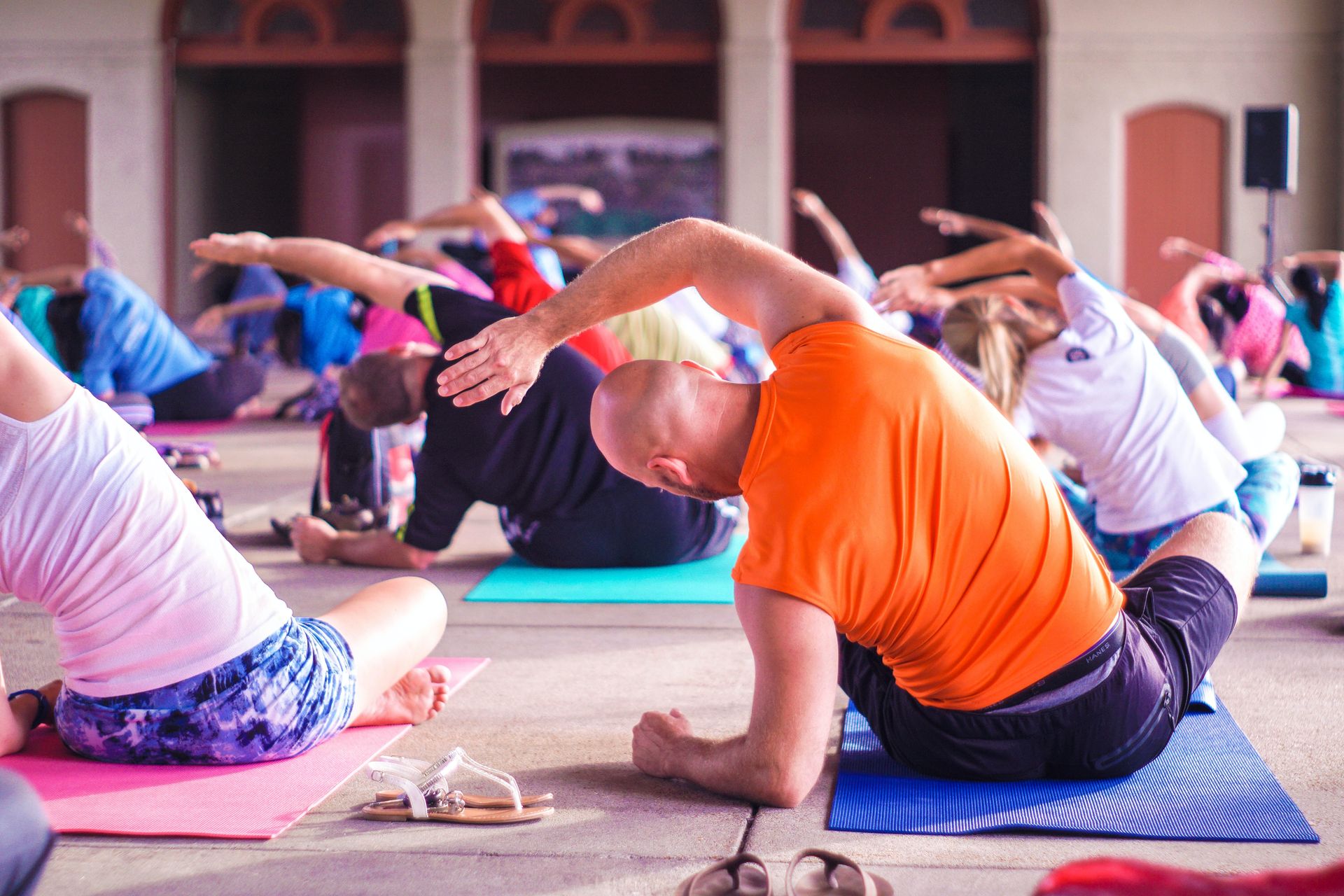Movement is important for health and the psyche
Movement helps us maintain an optimal body weight, improves blood circulation and brain function, reduces the risk of a range of diseases, strengthens bones and muscles and, last but not least, improves our mood and ability to perform daily activities. Few lifestyle changes have as great an impact on our health as regular exercise. A healthy diet is just as important. What are the benefits of regular physical activity?
The modern lifestyle is bad for your health
The main problem of our time is the lack of physical activity. People are much less active today, and this is largely due to the fact that technology has made our lives so much easier. Instead of walking, we drive or use public transport, most household chores are done by machines and we spend our free time in front of the TV, cell phone or computer screen. What's more, far fewer people do manual work, and most of us have sedentary jobs. Many adults spend more than half their day sitting down, forgetting the importance of physical exercise. Yet physical inactivity has been described as a "silent killer". Indeed, sedentary lifestyles have a negative impact on our health and increase the risk of many chronic diseases such as heart disease, overweight and obesity, stroke and type 2 diabetes.

7 good reasons to exercise regularly
1. Movement boosts overall health and protects against chronic disease
Movement is an integral part of health promotion and should come naturally to all of us. Regular movement is particularly important for the proper functioning of the cardiovascular system. Physical activity strengthens the heart and improves blood circulation. Regular physical activity also helps regulate blood pressure and cholesterol. It helps increase HDL ("good") cholesterol while balancing LDL ("bad") cholesterol.
By moving regularly without overdoing it, we increase our chances of living longer. In fact, regular exercise has been shown to reduce the risk of cardiovascular disease and certain cancers, which are among the leading causes of death. Movement also helps lower blood sugar levels and increases tissue sensitivity to insulin. This can reduce the risk of, or improve the course of, metabolic syndrome and type 2 diabetes. Regular and sufficient physical activity is the best way to prevent civilization-related diseases.
Regular exercise can help prevent a number of serious health problems.
- Hypertension
- Hypercholesterolemia
- Type 2 diabetes
- Stroke and myocardial infarction
- Metabolic syndrome
- Depression
- Anxiety
- Colon, breast, uterine and lung cancer
- Arthritis
- Osteoarthritis
- Dementia
2. Movement improves memory and concentration
Regular exercise can boost cognitive functions such as memory, concentration and productivity. Movement improves blood circulation in the tissues, thus increasing the supply of oxygen to the brain. Regular exercise also slows the degeneration of brain structures and cognitive decline as we age, so movement can also have a positive effect on the brains of the elderly.
3. Movement for better quality sleep
Not sleeping well? All the more reason to get moving. Regular physical activity is associated with better quality sleep. Regular exercise helps you fall asleep more quickly, with better quality rest and deeper sleep. However, it's important not to exercise too soon before bedtime, otherwise you'll get the opposite effect.
4. Movement puts us in a better mood
When we move, our bodies release natural chemicals that can improve our mood and make us feel happy (endorphins). Moving regularly can reduce feelings of stress and anxiety and counteract depression. In fact, movement is a therapy accessible to everyone. Evidence shows that people with low levels of physical activity are more prone to depression and often suffer from anxiety.

5. Get closer to a dream figure
Let's not forget either that physical activity is an important tool for achieving an optimal body weight. Movement not only improves our physical fitness, it also helps us shape our bodies and achieve sexy curves. Alongside a proper diet, physical activity plays an important role in maintaining a healthy weight and preventing obesity.
6. Movement strengthens muscles and bones
Regular movement and exercise help children and teenagers build strong bones. Later in life, they can also slow the loss of bone density and the development of osteoporosis that comes with age. When it comes to strengthening muscles, ligaments and bones, it's beneficial to include strength training to help increase or maintain muscle mass and strength as we age.
7. Movement can boost your sex life
It's true, moving regularly can improve our sex life. Movement boosts energy levels, improves self-confidence, increases libido in both men and women, enhances sexual performance and improves our overall sex life. Regular physical activity can also reduce the risk of sexual disorders such as erectile dysfunction.

How often should you exercise?
The World Health Organization recommends that adults aged 18 and over take part in at least 150 to 300 minutes of moderate physical activity per week (walking, cycling, etc.) or at least 75 to 150 minutes of intense physical activity per week (running, weight training, hiking, intense dancing), or a combination of both.
For children, exercise should be daily - children and teenagers should be active for at least 60 minutes every day. The type and intensity of physical activity should be adapted to the child's age and abilities. We mainly choose activities that appeal to children - for example, ball games, swimming or a simple jog with friends.
Movement is also important for the elderly. Older people should devote at least 150 to 300 minutes to adequate exercise. In addition to routine activities such as walking, it is recommended to include strengthening and balance exercises at least three times a week, which will increase the body's functional capacity and may prevent unwanted falls.
Aerobic or anaerobic exercise: what are the advantages?
The ideal combination is aerobic movement and strength training. Aerobics is an endurance movement that includes brisk walking, running, cycling, swimming and dancing, for example. These activities strengthen our respiratory and cardiovascular systems. Strength training is one of the anaerobic activities and helps us maintain the strength of our muscles, bones and ligaments. This can involve weight training using dumbbells, machines, your own body weight, suspension systems (TRX) and resistance bands. Both are important and should have a place in our lives.

I can't exercise, I don't like it... what can I do?
Regular visits to the gym or running circuits in nature are great, but not everyone has the time or inclination to do so. But don't despair if you can't find the time to exercise every day. Any activity is better than no activity. For most people, the easiest way to move more is to incorporate some activity into their daily routine.
Everything counts. How do you incorporate more movement?
It's really quite simple. Incorporate more movement into your daily routine. Even small changes can help. Instead of taking the elevator, take the stairs. Walk down the hall to a colleague's office while you're waiting to send e-mails. Park further away from your destination and walk or cycle the rest of the way, time permitting. Instead of shopping online, visit the store yourself or, for example, wash your car and mow the lawn yourself once. If you have a dog, walk it regularly, if only for 30 minutes. The more you do, the better it is for your health, even without targeted exercise.
Don't forget to take breaks when you're sitting down
If you have a sedentary job, it's extremely important to take regular breaks. Long periods of sitting pose the greatest risk to your health and musculoskeletal system. Ideally, you should take a break every 30 minutes during working hours. Sitting for more than 60 minutes can be very destructive over time. Similarly, it's not enough to go for a workout after a day of work and rigid sitting, but you need to set aside time during the day to walk, stretch or at least get up from your chair for a minute.